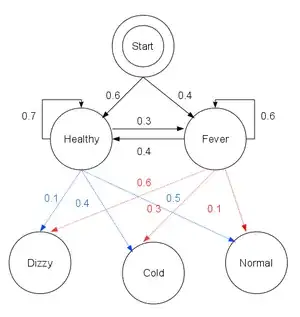Yes this is possible and is exactly what a Markov process aims to accomplish.
The Hidden Markov Model can be considered a simple dynamic Bayesian network. This means that it will generate a probabilistic outcome for a number of states (classes) given a sequence of inputs.
This can be used for a classification task based on a threshold probability to make a confirmed decision.
Let's take a simple example

The above example is a model to determine how a person will be feeling given some sample data of the previous days.
# Sample data
data = ['Healthy', 'Healthy', 'Fever']
Using this data, it's possible to calculate the probability of each possible state (outcome).
# Probability after 2 Healthy and 1 Fever day
P = 0.6 * 0.7 * 0.3
# Final day state 'Fever'
# Calculating probabilities for each state
Dizzy = P * 0.6
Cold = P * 0.3
Normal = P * 0.1
We can calculate the probability of each state and this will be unique for every unique sequence of historical data.
